TE
-
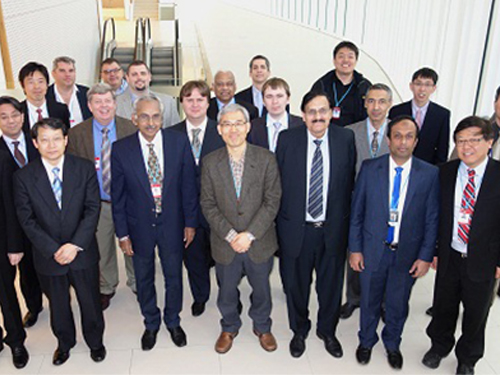 Professor Rim Presents at IAEA Workshop in Vienna
Professor Chun-Taek Rim of the Department of Nuclear and Quantum Engineering at KAIST recently attended the International Atomic Energy Agency (IAEA)’s workshop on the Application of Wireless Technologies in Nuclear Power Plant Instrumentation and Control System. It took place on March 30-April 2, 2015, in Vienna, Austria.
Representing Korea, Professor Rim gave a talk entitled “Highly Reliable Wireless Power and Communications under Severe Accident of Nuclear Power Plants (NPPs).” About 20 industry experts from 12 countries such as AREVA (France), Westinghouse (US), Oak Ridge National Laboratory (US), Hitachi (Japan), and ENEA (Italy) joined the meeting.
The IAEA hosted the workshop to explore the application of wireless technology for the operation and management of NPPs. It formed a committee consisting of eminent professionals worldwide in NPP instrumentation and control systems, communications, and nuclear power to examine this issue in-depth and to conduct various research projects for the next three years.
In particular, the committee will concentrate its research on improving the reliability and safety of using wireless technology, not only in the normal operation of nuclear plants but also in extreme conditions such as the Fukushima Daiichi nuclear accident. The complementation, economic feasibility, and standardization of NPPs when applying wireless technology will be also discussed.
Professor Rim currently leads the Nuclear Power Electronics
and Robotics Lab at KAIST (http://tesla.kaist.ac.kr/index_eng.php?lag=eng).
Picture 1: Professors Rim presents his topic at the IAEA Workshop in Vienna.
Picture 2: The IAEA Workshop Participants
2015.04.07 View 14354
Professor Rim Presents at IAEA Workshop in Vienna
Professor Chun-Taek Rim of the Department of Nuclear and Quantum Engineering at KAIST recently attended the International Atomic Energy Agency (IAEA)’s workshop on the Application of Wireless Technologies in Nuclear Power Plant Instrumentation and Control System. It took place on March 30-April 2, 2015, in Vienna, Austria.
Representing Korea, Professor Rim gave a talk entitled “Highly Reliable Wireless Power and Communications under Severe Accident of Nuclear Power Plants (NPPs).” About 20 industry experts from 12 countries such as AREVA (France), Westinghouse (US), Oak Ridge National Laboratory (US), Hitachi (Japan), and ENEA (Italy) joined the meeting.
The IAEA hosted the workshop to explore the application of wireless technology for the operation and management of NPPs. It formed a committee consisting of eminent professionals worldwide in NPP instrumentation and control systems, communications, and nuclear power to examine this issue in-depth and to conduct various research projects for the next three years.
In particular, the committee will concentrate its research on improving the reliability and safety of using wireless technology, not only in the normal operation of nuclear plants but also in extreme conditions such as the Fukushima Daiichi nuclear accident. The complementation, economic feasibility, and standardization of NPPs when applying wireless technology will be also discussed.
Professor Rim currently leads the Nuclear Power Electronics
and Robotics Lab at KAIST (http://tesla.kaist.ac.kr/index_eng.php?lag=eng).
Picture 1: Professors Rim presents his topic at the IAEA Workshop in Vienna.
Picture 2: The IAEA Workshop Participants
2015.04.07 View 14354 -
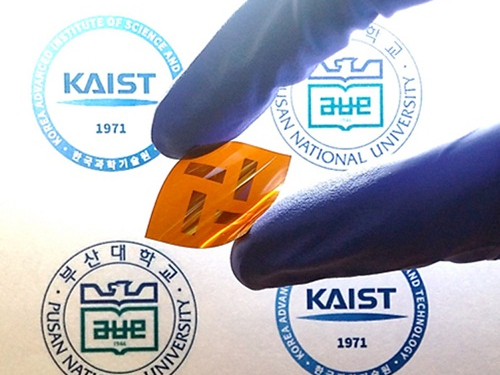 Polymers with Highly Improved Light-transformation Efficiency
A joint Korean research team, led by Professor Bum-Joon Kim of the Department of Chemical and Biomolecular Engineering at KAIST and Professor Young-Woo Han of the Department of Nanofusion Engineering at Pusan National University, has developed a new type of electrically-conductive polymer for solar batteries with an improved light-transformation efficiency of up to 5%. The team considers it a viable replacement for existing plastic batteries for solar power which is viewed as the energy source of the future.
Polymer solar cells have greater structural stability and heat resistance compared to fullerene organic solar cells. However, they have lower light-transformation efficiency—below 4%—compared to 10% of the latter. The low efficiency is due to the failure of blending among the polymers that compose the active layer of the cell. This phenomenon deters the formation and movement of electrons and thus lowers light-transformation efficiency.
By manipulating the structure and concentration of conductive polymers, the team was able to effectively increase the polymer blending and increase light-transformation efficiency. The team was able to maximize the efficiency up to 6% which is the highest reported ratio.
Professor Kim said, “This research demonstrates that conductive polymer plastics can be used widely for solar cells and batteries for mobile devices.”
The research findings were published in the February 18th issue of the Journal of the American Chemical Society (JACS).
Picture: Flexible Solar Cell Polymer Developed by the Research Team
2015.04.05 View 12295
Polymers with Highly Improved Light-transformation Efficiency
A joint Korean research team, led by Professor Bum-Joon Kim of the Department of Chemical and Biomolecular Engineering at KAIST and Professor Young-Woo Han of the Department of Nanofusion Engineering at Pusan National University, has developed a new type of electrically-conductive polymer for solar batteries with an improved light-transformation efficiency of up to 5%. The team considers it a viable replacement for existing plastic batteries for solar power which is viewed as the energy source of the future.
Polymer solar cells have greater structural stability and heat resistance compared to fullerene organic solar cells. However, they have lower light-transformation efficiency—below 4%—compared to 10% of the latter. The low efficiency is due to the failure of blending among the polymers that compose the active layer of the cell. This phenomenon deters the formation and movement of electrons and thus lowers light-transformation efficiency.
By manipulating the structure and concentration of conductive polymers, the team was able to effectively increase the polymer blending and increase light-transformation efficiency. The team was able to maximize the efficiency up to 6% which is the highest reported ratio.
Professor Kim said, “This research demonstrates that conductive polymer plastics can be used widely for solar cells and batteries for mobile devices.”
The research findings were published in the February 18th issue of the Journal of the American Chemical Society (JACS).
Picture: Flexible Solar Cell Polymer Developed by the Research Team
2015.04.05 View 12295 -
 Professor Shim Featured with His Drone System in IEEE Spectrum
The IEEE Spectrum, a technology and science magazine published by the Institute of Electrical and Electronics Engineers (IEEE), featured an article of KAIST’s autonomous unmanned aerial vehicles (UAVs) entitled “South Korea Prepares for Drone vs. Drone Combat,” posted on April 1, 2015.
The article introduces the anti-drone defense system being developed by Professor “David” Hyunchul Shim of the Department of Aerospace Engineering at KAIST. With the goal of developing guard drones that can detect and capture unknown UAVs, the anti-drone defense system consists of reconnaissance drones, agile multi-rotor UAVs equipped with nets which are dropped to snare enemy drones, and transport UAVs to carry smaller drones.
Professor Shim currently leads KAIST’s Unmanned System Research Group (USRG, http://unmanned.kaist.ac.kr/) and Center of Field Robotics for Innovation, Exploration, aNd Defense (C-FRIEND).
For the article, please go to http://spectrum.ieee.org/automaton/robotics/aerial-robots/south-korea-drone-vs-drone.
2015.04.02 View 14871
Professor Shim Featured with His Drone System in IEEE Spectrum
The IEEE Spectrum, a technology and science magazine published by the Institute of Electrical and Electronics Engineers (IEEE), featured an article of KAIST’s autonomous unmanned aerial vehicles (UAVs) entitled “South Korea Prepares for Drone vs. Drone Combat,” posted on April 1, 2015.
The article introduces the anti-drone defense system being developed by Professor “David” Hyunchul Shim of the Department of Aerospace Engineering at KAIST. With the goal of developing guard drones that can detect and capture unknown UAVs, the anti-drone defense system consists of reconnaissance drones, agile multi-rotor UAVs equipped with nets which are dropped to snare enemy drones, and transport UAVs to carry smaller drones.
Professor Shim currently leads KAIST’s Unmanned System Research Group (USRG, http://unmanned.kaist.ac.kr/) and Center of Field Robotics for Innovation, Exploration, aNd Defense (C-FRIEND).
For the article, please go to http://spectrum.ieee.org/automaton/robotics/aerial-robots/south-korea-drone-vs-drone.
2015.04.02 View 14871 -
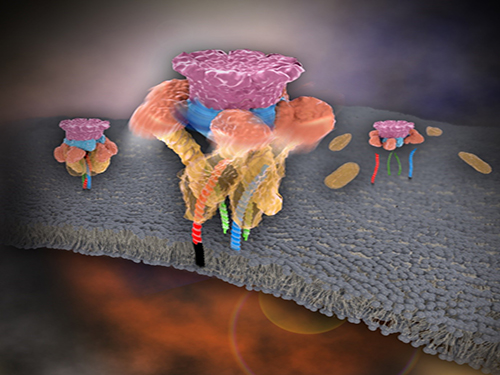 Mystery in Membrane Traffic How NSF Disassembles Single SNAR Complex Solved
KAIST researchers discovered that the protein N-ethylmaleimide-sensitive factor (NSF) unravels a single SNARE complex using one round ATP turnover by tearing the complex with a single burst, contradicting a previous theory that it unwinds in a processive manner.
In 2013, James E. Rothman, Randy W. Schekman, and Thomas C. Südhof won the Nobel Prize in Physiology or Medicine for their discoveries of molecular machineries for vesicle trafficking, a major transport system in cells for maintaining cellular processes. Vesicle traffic acts as a kind of “home-delivery service” in cells. Vesicles package and deliver materials such as proteins and hormones from one cell organelle to another. Then it releases its contents by fusing with the target organelle’s membrane. One example of vesicle traffic is in neuronal communications, where neurotransmitters are released from a neuron. Some of the key proteins for vesicle traffic discovered by the Nobel Prize winners were N-ethylmaleimide-sensitive factor (NSF), alpha-soluble NSF attachment protein (α-SNAP), and soluble SNAP receptors (SNAREs).
SNARE proteins are known as the minimal machinery for membrane fusion. To induce membrane fusion, the proteins combine to form a SNARE complex in a four helical bundle, and NSF and α-SNAP disassemble the SNARE complex for reuse. In particular, NSF can bind an energy source molecule, adenosine triphosphate (ATP), and the ATP-bound NSF develops internal tension via cleavage of ATP. This process is used to exert great force on SNARE complexes, eventually pulling them apart. However, although about 30 years have passed since the Nobel Prize winners’ discovery, how NSF/α-SNAP disassembled the SNARE complex remained a mystery to scientists due to a lack in methodology.
In a recent issue of Science, published on March 27, 2015, a research team, led by Tae-Young Yoon of the Department of Physics at the Korea Advanced Institute of Science and Technology (KAIST) and Reinhard Jahn of the Department of Neurobiology of the Max-Planck-Institute for Biophysical Chemistry, reports that NSF/α-SNAP disassemble a single SNARE complex using various single-molecule biophysical methods that allow them to monitor and manipulate individual protein complexes.
“We have learned that NSF releases energy in a burst within 20 milliseconds to “tear” the SNARE complex apart in a one-step global unfolding reaction, which is immediately followed by the release of SNARE proteins,” said Yoon.
Previously, it was believed that NSF disassembled a SNARE complex by unwinding it in a processive manner. Also, largely unexplained was how many cycles of ATP hydrolysis were required and how these cycles were connected to the disassembly of the SNARE complex.
Yoon added, “From our research, we found that NSF requires hydrolysis of ATPs that were already bound before it attached to the SNAREs—which means that only one round of an ATP turnover is sufficient for SNARE complex disassembly. Moreover, this is possible because NSF pulls a SNARE complex apart by building up the energy from individual ATPs and releasing it at once, yielding a “spring-loaded” mechanism.”
NSF is a member of the ATPases associated with various cellular activities family (AAA+ ATPase), which is essential for many cellular functions such as DNA replication and protein degradation, membrane fusion, microtubule severing, peroxisome biogenesis, signal transduction, and the regulation of gene expression. This research has added valuable new insights and hints for studying AAA+ ATPase proteins, which are crucial for various living beings.
The title of the research paper is “Spring-loaded unraveling of a single SNARE complex by NSF in one round of ATP turnover.” (DOI: 10.1126/science.aaa5267)
Youtube Link: https://www.youtube.com/watch?v=FqTSYHtyHWE&feature=youtu.be
Picture 1. Working model of how NSF/α-SNAP disassemble a single SNARE complex
Picture 2. After neurotransmitter release, NSF disassembles a single SNARE complex using a single round of ATP turnover in a single burst reaction.
2015.03.28 View 11802
Mystery in Membrane Traffic How NSF Disassembles Single SNAR Complex Solved
KAIST researchers discovered that the protein N-ethylmaleimide-sensitive factor (NSF) unravels a single SNARE complex using one round ATP turnover by tearing the complex with a single burst, contradicting a previous theory that it unwinds in a processive manner.
In 2013, James E. Rothman, Randy W. Schekman, and Thomas C. Südhof won the Nobel Prize in Physiology or Medicine for their discoveries of molecular machineries for vesicle trafficking, a major transport system in cells for maintaining cellular processes. Vesicle traffic acts as a kind of “home-delivery service” in cells. Vesicles package and deliver materials such as proteins and hormones from one cell organelle to another. Then it releases its contents by fusing with the target organelle’s membrane. One example of vesicle traffic is in neuronal communications, where neurotransmitters are released from a neuron. Some of the key proteins for vesicle traffic discovered by the Nobel Prize winners were N-ethylmaleimide-sensitive factor (NSF), alpha-soluble NSF attachment protein (α-SNAP), and soluble SNAP receptors (SNAREs).
SNARE proteins are known as the minimal machinery for membrane fusion. To induce membrane fusion, the proteins combine to form a SNARE complex in a four helical bundle, and NSF and α-SNAP disassemble the SNARE complex for reuse. In particular, NSF can bind an energy source molecule, adenosine triphosphate (ATP), and the ATP-bound NSF develops internal tension via cleavage of ATP. This process is used to exert great force on SNARE complexes, eventually pulling them apart. However, although about 30 years have passed since the Nobel Prize winners’ discovery, how NSF/α-SNAP disassembled the SNARE complex remained a mystery to scientists due to a lack in methodology.
In a recent issue of Science, published on March 27, 2015, a research team, led by Tae-Young Yoon of the Department of Physics at the Korea Advanced Institute of Science and Technology (KAIST) and Reinhard Jahn of the Department of Neurobiology of the Max-Planck-Institute for Biophysical Chemistry, reports that NSF/α-SNAP disassemble a single SNARE complex using various single-molecule biophysical methods that allow them to monitor and manipulate individual protein complexes.
“We have learned that NSF releases energy in a burst within 20 milliseconds to “tear” the SNARE complex apart in a one-step global unfolding reaction, which is immediately followed by the release of SNARE proteins,” said Yoon.
Previously, it was believed that NSF disassembled a SNARE complex by unwinding it in a processive manner. Also, largely unexplained was how many cycles of ATP hydrolysis were required and how these cycles were connected to the disassembly of the SNARE complex.
Yoon added, “From our research, we found that NSF requires hydrolysis of ATPs that were already bound before it attached to the SNAREs—which means that only one round of an ATP turnover is sufficient for SNARE complex disassembly. Moreover, this is possible because NSF pulls a SNARE complex apart by building up the energy from individual ATPs and releasing it at once, yielding a “spring-loaded” mechanism.”
NSF is a member of the ATPases associated with various cellular activities family (AAA+ ATPase), which is essential for many cellular functions such as DNA replication and protein degradation, membrane fusion, microtubule severing, peroxisome biogenesis, signal transduction, and the regulation of gene expression. This research has added valuable new insights and hints for studying AAA+ ATPase proteins, which are crucial for various living beings.
The title of the research paper is “Spring-loaded unraveling of a single SNARE complex by NSF in one round of ATP turnover.” (DOI: 10.1126/science.aaa5267)
Youtube Link: https://www.youtube.com/watch?v=FqTSYHtyHWE&feature=youtu.be
Picture 1. Working model of how NSF/α-SNAP disassemble a single SNARE complex
Picture 2. After neurotransmitter release, NSF disassembles a single SNARE complex using a single round of ATP turnover in a single burst reaction.
2015.03.28 View 11802 -
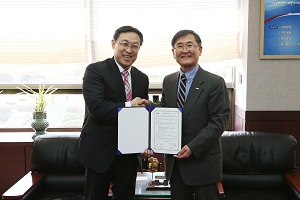 KAIST & the Classic 500 Co Sign for Mobile Healthcare Research
KAIST and The Classic 500 Co., Ltd., an elder care provider based in Seoul, signed a memorandum of understanding to expand medical services by cooperating on the research of medical services and IT on March 24, 2015.
Twenty people from the two institutions, including President Steve Kang, Dong-Hyun Bak, CEO of The Classic 500 and Mun-Sul Jeong, a former KAIST Chairman of the Board, attended the signing ceremony.
Under the agreement, the two institutions will cooperate on mobile healthcare research and the development of a telemedicine system. They will also research and develop a system to better serve society with medical services.
The Classic 500, established by Konkuk University in Korea, provides nursing care services and assisted living facilities for senior citizens.
2015.03.26 View 9734
KAIST & the Classic 500 Co Sign for Mobile Healthcare Research
KAIST and The Classic 500 Co., Ltd., an elder care provider based in Seoul, signed a memorandum of understanding to expand medical services by cooperating on the research of medical services and IT on March 24, 2015.
Twenty people from the two institutions, including President Steve Kang, Dong-Hyun Bak, CEO of The Classic 500 and Mun-Sul Jeong, a former KAIST Chairman of the Board, attended the signing ceremony.
Under the agreement, the two institutions will cooperate on mobile healthcare research and the development of a telemedicine system. They will also research and develop a system to better serve society with medical services.
The Classic 500, established by Konkuk University in Korea, provides nursing care services and assisted living facilities for senior citizens.
2015.03.26 View 9734 -
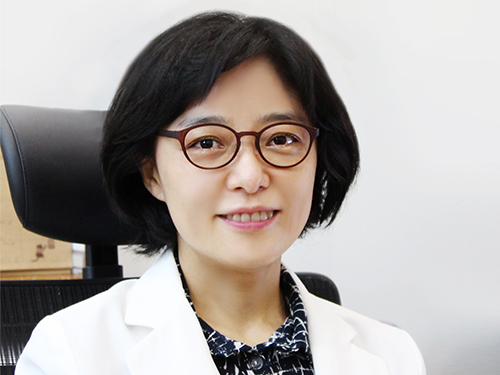 KAIST Clinic's Dr. Joo-yeon Kim Receives Minister's Award
Dr. Joo-yeon Kim receives citation on “The Fifth Tuberculosis Prevention Day” for her contribution to campus tuberculosis outbreak prevention.
Dr. Joo-Yeon Kim, the general manager of medical services of KAIST Clinic, received an award from the Korean Ministry of Health and Welfare on March 24, 2015. The award ceremony took place during “The Fifth Tuberculosis Prevention Day,” hosted by the Ministry of Health and Welfare and supervised by the Korea Centers for Disease Control and Prevention. The event was held at Seoul Sejong Cultural Center with 300 distinguished guests in attendance including the Minister of Health and Welfare, the Committee Members of the National Assembly Health and Welfare Committee, and the Director of Korea Centers for Disease Control Prevention.
The award acknowledges Dr. Kim’s contribution to curbing a tuberculosis (TB) outbreak on KAIST’s campus in 2013. In cooperation with the Infectious Disease Prevention Committee in KAIST, Korea Centers for Disease Control and Prevention, and Yuseong Public Health Centre, Dr. Kim’s swift treatment and rigorous control of both TB and latent TB patients prevented further outbreaks.
The KAIST Clinic is the first university-affiliated clinic established in September 2010 after Neil Pappalardo, the President of MEDITEC in the US, donated $2.5 million to KAIST. It is currently running 10 medical departments including those in family medicine, stress clinic, and dentistry to provide medical care to students and staff.
Every March 24 marks the annual “Tuberculosis Prevention Day” and “World Tuberculosis Day.” The “World Tuberculosis Day” was established in 1982 to promote TB prevention and early detection. It commemorated the 100th year anniversary of the discovery of M. tuberculosis on March 24, 1883 by the German bacteriologist Robert Koch.
According to the TB Prevention Act (Article 4), Korea marks “The Tuberculosis Prevention Day” alongside the “World Tuberculosis Day” on March 24 to raise public awareness of the magnitude of the disease and the importance of prevention.
2015.03.25 View 9157
KAIST Clinic's Dr. Joo-yeon Kim Receives Minister's Award
Dr. Joo-yeon Kim receives citation on “The Fifth Tuberculosis Prevention Day” for her contribution to campus tuberculosis outbreak prevention.
Dr. Joo-Yeon Kim, the general manager of medical services of KAIST Clinic, received an award from the Korean Ministry of Health and Welfare on March 24, 2015. The award ceremony took place during “The Fifth Tuberculosis Prevention Day,” hosted by the Ministry of Health and Welfare and supervised by the Korea Centers for Disease Control and Prevention. The event was held at Seoul Sejong Cultural Center with 300 distinguished guests in attendance including the Minister of Health and Welfare, the Committee Members of the National Assembly Health and Welfare Committee, and the Director of Korea Centers for Disease Control Prevention.
The award acknowledges Dr. Kim’s contribution to curbing a tuberculosis (TB) outbreak on KAIST’s campus in 2013. In cooperation with the Infectious Disease Prevention Committee in KAIST, Korea Centers for Disease Control and Prevention, and Yuseong Public Health Centre, Dr. Kim’s swift treatment and rigorous control of both TB and latent TB patients prevented further outbreaks.
The KAIST Clinic is the first university-affiliated clinic established in September 2010 after Neil Pappalardo, the President of MEDITEC in the US, donated $2.5 million to KAIST. It is currently running 10 medical departments including those in family medicine, stress clinic, and dentistry to provide medical care to students and staff.
Every March 24 marks the annual “Tuberculosis Prevention Day” and “World Tuberculosis Day.” The “World Tuberculosis Day” was established in 1982 to promote TB prevention and early detection. It commemorated the 100th year anniversary of the discovery of M. tuberculosis on March 24, 1883 by the German bacteriologist Robert Koch.
According to the TB Prevention Act (Article 4), Korea marks “The Tuberculosis Prevention Day” alongside the “World Tuberculosis Day” on March 24 to raise public awareness of the magnitude of the disease and the importance of prevention.
2015.03.25 View 9157 -
 KAIST Develops a Credit-Card-Thick Flexible Lithium Ion Battery
Since the battery can be charged wirelessly, useful applications are expected including medical patches and smart cards.
Professor Jang Wook Choi at KAIST’s Graduate School of Energy, Environment, Water, and Sustainability (EEWS) and Dr. Jae Yong Song at the Korea Research Institute of Standards and Science jointly led research to invent a flexible lithium ion battery that is thinner than a credit card and can be charged wirelessly.
Their research findings were published online in Nano Letters on March 6, 2015. Lithium ion batteries are widely used today in various electronics including mobile devices and electronic cars. Researchers said that their work could help accelerate the development of flexible and wearable electronics.
Conventional lithium ion batteries are manufactured based on a layering technology, stacking up anodes, separating films, and cathodes like a sandwich, which makes it difficult to reduce their thickness. In addition, friction arises between layers, making the batteries impossible to bend. The coating films of electrodes easily come off, which contributes to the batteries’ poor performance.
The research team abandoned the existing production technology. Instead, they removed the separating films, layered the cathodes and anodes collinearly on a plane, and created a partition between electrodes to eliminate potential problems, such as short circuits and voltage dips, commonly present in lithium ion batteries.
After more than five thousand consecutive flexing experiments, the research team confirmed the possibility of a more flexible electrode structure while maintaining the battery performance comparable to the level of current lithium ion batteries.
Flexible batteries can be applied to integrated smart cards, cosmetic and medical patches, and skin adhesive sensors that can control a computer with voice commands or gesture as seen in the movie “Iron Man.”
Moreover, the team has successfully developed wireless-charging technology using electromagnetic induction and solar batteries.
They are currently developing a mass production process to combine this planar battery technology and printing, to ultimately create a new paradigm to print semiconductors and batteries using 3D printers.
Professor Choi said, “This new technology will contribute to diversifying patch functions as it is applicable to power various adhesive medical patches.”
Picture 1: Medical patch (left) and flexible secondary battery (right)
Picture 2: Diagram of flexible battery
Picture 3: Smart card embedding flexible battery
2015.03.24 View 13878
KAIST Develops a Credit-Card-Thick Flexible Lithium Ion Battery
Since the battery can be charged wirelessly, useful applications are expected including medical patches and smart cards.
Professor Jang Wook Choi at KAIST’s Graduate School of Energy, Environment, Water, and Sustainability (EEWS) and Dr. Jae Yong Song at the Korea Research Institute of Standards and Science jointly led research to invent a flexible lithium ion battery that is thinner than a credit card and can be charged wirelessly.
Their research findings were published online in Nano Letters on March 6, 2015. Lithium ion batteries are widely used today in various electronics including mobile devices and electronic cars. Researchers said that their work could help accelerate the development of flexible and wearable electronics.
Conventional lithium ion batteries are manufactured based on a layering technology, stacking up anodes, separating films, and cathodes like a sandwich, which makes it difficult to reduce their thickness. In addition, friction arises between layers, making the batteries impossible to bend. The coating films of electrodes easily come off, which contributes to the batteries’ poor performance.
The research team abandoned the existing production technology. Instead, they removed the separating films, layered the cathodes and anodes collinearly on a plane, and created a partition between electrodes to eliminate potential problems, such as short circuits and voltage dips, commonly present in lithium ion batteries.
After more than five thousand consecutive flexing experiments, the research team confirmed the possibility of a more flexible electrode structure while maintaining the battery performance comparable to the level of current lithium ion batteries.
Flexible batteries can be applied to integrated smart cards, cosmetic and medical patches, and skin adhesive sensors that can control a computer with voice commands or gesture as seen in the movie “Iron Man.”
Moreover, the team has successfully developed wireless-charging technology using electromagnetic induction and solar batteries.
They are currently developing a mass production process to combine this planar battery technology and printing, to ultimately create a new paradigm to print semiconductors and batteries using 3D printers.
Professor Choi said, “This new technology will contribute to diversifying patch functions as it is applicable to power various adhesive medical patches.”
Picture 1: Medical patch (left) and flexible secondary battery (right)
Picture 2: Diagram of flexible battery
Picture 3: Smart card embedding flexible battery
2015.03.24 View 13878 -
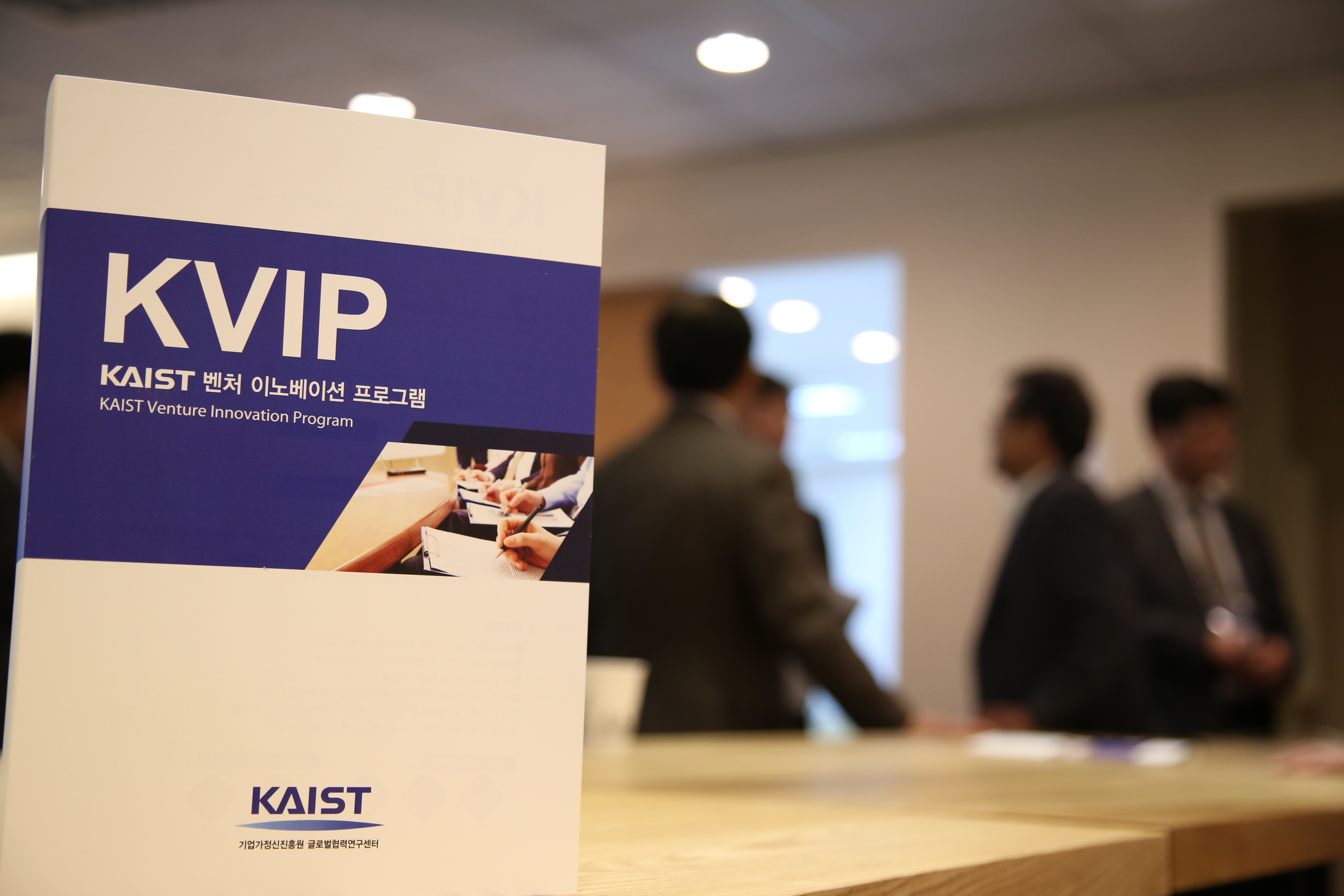 KVIP Opened in Pangyo
KAIST has opened the KAIST Venture Innovation Program (KVIP) in its Center for Industry Outreach, designed for executive and high-ranking officers of venture companies. Located in Pangyo Techno Valley, KAIST’s Center for Industry Outreach was established in collaboration with the government of Gyeonggi Province to support venture companies in Pangyo for business management training, venture networking, and university-industry cooperation.
The program will be held every Monday for 12 weeks from April 13 to July 6 in KAIST’s Center for Industry Outreach. This executive education program mainly focuses on solving problems that arise when a medium-sized venture company is in the course of growing into a global corporation. The program is divided into four courses which will cover business management, competition in the global market, transformation of a company, and technological innovation.
Professors from various departments at KAIST will give lectures on their fields. Professor Jaeseung Jeong from the Bio and Brain Engineering Department, Professor Hoi-Jun Yoo from the Electrical Engineering Department, Professor Sangmin Bae from the Industrial Design Department, and Professor Kwangjae Sung from the Business and Technology Management Department will each deliver lectures on brain engineering, semiconductor, design, and restructuring.
Industry experts are also invited to give talks, including Dr. Dae-Gyu Byun, the Chief Executive Officer and President of HUMAX Electronics, Dr. Gwang-Cheol Choi, the Chief Executive Officer of SK Engineering & Construction, Mr. Il-young Kim, the former Chief Executive Officer of KT, Dr. Jae-hoon Jeong, the President of the Korea Institute for the Advancement of Technology (KIAT), Dr. Intak Bae, the Chief Executive Officer of Summit Partners, and Mr. Kyung-taek Kwak, a film director.
The department has started recruiting first round applicants for the program, targeting executive and high-ranking officers of middle-sized venture companies. The details of the program can be found on its website, kvip.kaist.ac.kr.
2015.03.23 View 12019
KVIP Opened in Pangyo
KAIST has opened the KAIST Venture Innovation Program (KVIP) in its Center for Industry Outreach, designed for executive and high-ranking officers of venture companies. Located in Pangyo Techno Valley, KAIST’s Center for Industry Outreach was established in collaboration with the government of Gyeonggi Province to support venture companies in Pangyo for business management training, venture networking, and university-industry cooperation.
The program will be held every Monday for 12 weeks from April 13 to July 6 in KAIST’s Center for Industry Outreach. This executive education program mainly focuses on solving problems that arise when a medium-sized venture company is in the course of growing into a global corporation. The program is divided into four courses which will cover business management, competition in the global market, transformation of a company, and technological innovation.
Professors from various departments at KAIST will give lectures on their fields. Professor Jaeseung Jeong from the Bio and Brain Engineering Department, Professor Hoi-Jun Yoo from the Electrical Engineering Department, Professor Sangmin Bae from the Industrial Design Department, and Professor Kwangjae Sung from the Business and Technology Management Department will each deliver lectures on brain engineering, semiconductor, design, and restructuring.
Industry experts are also invited to give talks, including Dr. Dae-Gyu Byun, the Chief Executive Officer and President of HUMAX Electronics, Dr. Gwang-Cheol Choi, the Chief Executive Officer of SK Engineering & Construction, Mr. Il-young Kim, the former Chief Executive Officer of KT, Dr. Jae-hoon Jeong, the President of the Korea Institute for the Advancement of Technology (KIAT), Dr. Intak Bae, the Chief Executive Officer of Summit Partners, and Mr. Kyung-taek Kwak, a film director.
The department has started recruiting first round applicants for the program, targeting executive and high-ranking officers of middle-sized venture companies. The details of the program can be found on its website, kvip.kaist.ac.kr.
2015.03.23 View 12019 -
 KAIST and Hancom Sign for Development of Mobile Healthcare
KAIST signed a memorandum of understanding with Hancom, Inc., an office suite developer in Korea, to foster mobile healthcare software programs. President Steve Kang and Chairman Sang-Chul Kim of Hancom held a signing ceremony on March 13, 2015 at the KAIST campus.
Based on the agreement, KAIST and Hancom will exchange research personnel to build Dr. M, a smart healthcare platform developed by the university, collaborate in research and development, and cooperate in the transfer of research developments from the university to the software industry including Hancom.
KAIST and Hancom also signed a memorandum of understanding on the development of software in April 2014. The Hancom-KAIST Research Center opened on campus last October.
2015.03.20 View 10635
KAIST and Hancom Sign for Development of Mobile Healthcare
KAIST signed a memorandum of understanding with Hancom, Inc., an office suite developer in Korea, to foster mobile healthcare software programs. President Steve Kang and Chairman Sang-Chul Kim of Hancom held a signing ceremony on March 13, 2015 at the KAIST campus.
Based on the agreement, KAIST and Hancom will exchange research personnel to build Dr. M, a smart healthcare platform developed by the university, collaborate in research and development, and cooperate in the transfer of research developments from the university to the software industry including Hancom.
KAIST and Hancom also signed a memorandum of understanding on the development of software in April 2014. The Hancom-KAIST Research Center opened on campus last October.
2015.03.20 View 10635 -
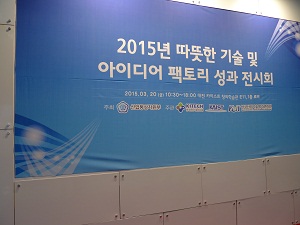 KAIST Exhibits Socially Benign Technologies
Exhibited 29 products that address the need to solve social issues such as a Braille printer
Students from the KAIST Idea Factory, a startup program for undergraduates operated by the Research Institute for Social Technology and Innovation (RISTI), hosted an exhibition presenting their research prototypes. The Idea Factory provides students with opportunities to try out new ideas and develop innovative technologies.
The exhibition was held at the Creative Learning building on campus on March 20, 2015. Students displayed 29 inventions, showcasing technologies to address important social issues. The exhibit included products and technologies developed by the students or already commercialized by small businesses such as a Braille printer, a hydrogen peroxide-oxygen respirator for vessel accidents, and an educational 3D printer. The small business exhibits included a removable additional power unit for wheelchairs, agricultural product anti-theft system, and security lighting.
KAIST also hosted a social technology innovation symposium in KAIST Institute Building on the same day. The theme of the symposium was the “Integration of Technological Innovation and Social Innovation – Social Technology Innovation.”
The key note speaker, Director Heung-Kyu Lee of RISTI, KAIST, presented a lecture on the topic, “The Meaning of Social Technology Innovation: System Change.” His talk was followed by Hyuk-Jin Choi of the Korea Social Enterprise Promotion Agency on “Social Economic Organizations of Korea and Social Technology,” and Jae-Sun Kim of The Grassroots on “Search for Social Innovation and Social Economy.”
The supervisor of the event, Director Lee said, “This exhibit focuses on technologies that could help the underprivileged. We will continue to support students’ ideas and small businesses’ endeavors to develop these technologies.”
KAIST established the Idea Factory in 2014 to assist KAIST students to commercialize creative and innovative ideas. The Idea Factory made a key contribution in commercializing the educational 3D printers last year.
Picture: A Braille Printer
2015.03.20 View 8077
KAIST Exhibits Socially Benign Technologies
Exhibited 29 products that address the need to solve social issues such as a Braille printer
Students from the KAIST Idea Factory, a startup program for undergraduates operated by the Research Institute for Social Technology and Innovation (RISTI), hosted an exhibition presenting their research prototypes. The Idea Factory provides students with opportunities to try out new ideas and develop innovative technologies.
The exhibition was held at the Creative Learning building on campus on March 20, 2015. Students displayed 29 inventions, showcasing technologies to address important social issues. The exhibit included products and technologies developed by the students or already commercialized by small businesses such as a Braille printer, a hydrogen peroxide-oxygen respirator for vessel accidents, and an educational 3D printer. The small business exhibits included a removable additional power unit for wheelchairs, agricultural product anti-theft system, and security lighting.
KAIST also hosted a social technology innovation symposium in KAIST Institute Building on the same day. The theme of the symposium was the “Integration of Technological Innovation and Social Innovation – Social Technology Innovation.”
The key note speaker, Director Heung-Kyu Lee of RISTI, KAIST, presented a lecture on the topic, “The Meaning of Social Technology Innovation: System Change.” His talk was followed by Hyuk-Jin Choi of the Korea Social Enterprise Promotion Agency on “Social Economic Organizations of Korea and Social Technology,” and Jae-Sun Kim of The Grassroots on “Search for Social Innovation and Social Economy.”
The supervisor of the event, Director Lee said, “This exhibit focuses on technologies that could help the underprivileged. We will continue to support students’ ideas and small businesses’ endeavors to develop these technologies.”
KAIST established the Idea Factory in 2014 to assist KAIST students to commercialize creative and innovative ideas. The Idea Factory made a key contribution in commercializing the educational 3D printers last year.
Picture: A Braille Printer
2015.03.20 View 8077 -
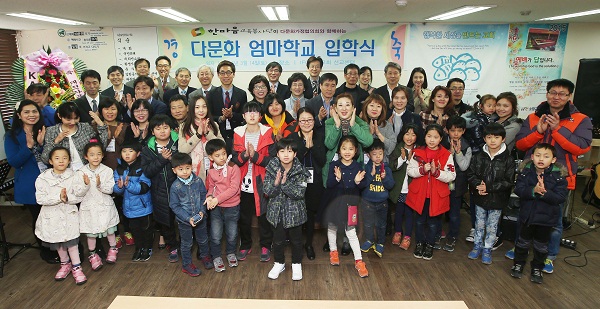 Emeritus Professors' Social Service for Embracing Multicultural Families
Korea has become a melting pot over recent years, with many families embracing diverse nationalities, cultures, and ethnicities. A group of KAIST emeritus professors volunteered to help these multicultural families, which are often formed through international marriages, better cope with life in Korea by creating a continuing education program called “Multicultural Mother School.”
The school admitted a total of ten non-Korean mothers for its first class and held an entrance ceremony for the students on March 14, 2015, at the IFC Hope Church in Daejeon. Classes began since March 16, 2015, offering the first lecture to students remotely via the Internet.
Professor Emeritus Byung-Kyu Choi, who organized the volunteering program and is the director of the Multicultural Mother School, said, “About 5% of newborns in Korea currently come from multicultural families. It is important that we should support them to assimilate well into the Korean society. Since 60% of multicultural children have yet to enter the public school system, particularly at the elementary schools level, offering their mothers opportunities to learn more about Korea will serve a greater good.”
2015.03.14 View 6949
Emeritus Professors' Social Service for Embracing Multicultural Families
Korea has become a melting pot over recent years, with many families embracing diverse nationalities, cultures, and ethnicities. A group of KAIST emeritus professors volunteered to help these multicultural families, which are often formed through international marriages, better cope with life in Korea by creating a continuing education program called “Multicultural Mother School.”
The school admitted a total of ten non-Korean mothers for its first class and held an entrance ceremony for the students on March 14, 2015, at the IFC Hope Church in Daejeon. Classes began since March 16, 2015, offering the first lecture to students remotely via the Internet.
Professor Emeritus Byung-Kyu Choi, who organized the volunteering program and is the director of the Multicultural Mother School, said, “About 5% of newborns in Korea currently come from multicultural families. It is important that we should support them to assimilate well into the Korean society. Since 60% of multicultural children have yet to enter the public school system, particularly at the elementary schools level, offering their mothers opportunities to learn more about Korea will serve a greater good.”
2015.03.14 View 6949 -
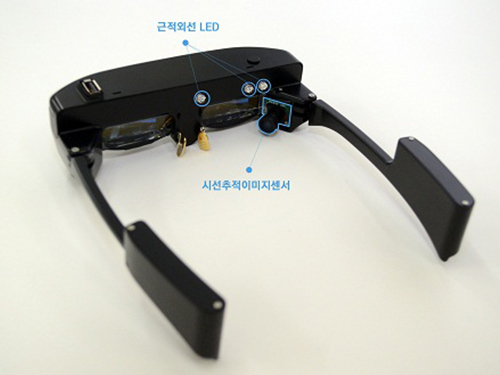 KAIST Introduces New UI for K-Glass 2
A newly developed user interface, the “i-Mouse,” in the K-Glass 2 tracks the user’s gaze and connects the device to the Internet through blinking eyes such as winks. This low-power interface provides smart glasses with an excellent user experience, with a long-lasting battery and augmented reality.
Smart glasses are wearable computers that will likely lead to the growth of the Internet of Things. Currently available smart glasses, however, reveal a set of problems for commercialization, such as short battery life and low energy efficiency. In addition, glasses that use voice commands have raised the issue of privacy concerns.
A research team led by Professor Hoi-Jun Yoo of the Electrical Engineering Department at the Korea Advanced Institute of Science and Technology (KAIST) has recently developed an upgraded model of the K-Glass (http://www.eurekalert.org/pub_releases/2014-02/tkai-kdl021714.php) called “K-Glass 2.”
K-Glass 2 detects users’ eye movements to point the cursor to recognize computer icons or objects in the Internet, and uses winks for commands. The researchers call this interface the “i-Mouse,” which removes the need to use hands or voice to control a mouse or touchpad. Like its predecessor, K-Glass 2 also employs augmented reality, displaying in real time the relevant, complementary information in the form of text, 3D graphics, images, and audio over the target objects selected by users.
The research results were presented, and K-Glass 2’s successful operation was demonstrated on-site to the 2015 Institute of Electrical and Electronics Engineers (IEEE) International Solid-State Circuits Conference (ISSCC) held on February 23-25, 2015 in San Francisco. The title of the paper was “A 2.71nJ/Pixel 3D-Stacked Gaze-Activated Object Recognition System for Low-power Mobile HMD Applications” (http://ieeexplore.ieee.org/Xplore/home.jsp).
The i-Mouse is a new user interface for smart glasses in which the gaze-image sensor (GIS) and object recognition processor (ORP) are stacked vertically to form a small chip. When three infrared LEDs (light-emitting diodes) built into the K-Glass 2 are projected into the user’s eyes, GIS recognizes their focal point and estimates the possible locations of the gaze as the user glances over the display screen. Then the electro-oculography sensor embedded on the nose pads reads the user’s eyelid movements, for example, winks, to click the selection. It is worth noting that the ORP is wired to perform only within the selected region of interest (ROI) by users. This results in a significant saving of battery life. Compared to the previous ORP chips, this chip uses 3.4 times less power, consuming on average 75 milliwatts (mW), thereby helping K-Glass 2 to run for almost 24 hours on a single charge.
Professor Yoo said, “The smart glass industry will surely grow as we see the Internet of Things becomes commonplace in the future. In order to expedite the commercial use of smart glasses, improving the user interface (UI) and the user experience (UX) are just as important as the development of compact-size, low-power wearable platforms with high energy efficiency. We have demonstrated such advancement through our K-Glass 2. Using the i-Mouse, K-Glass 2 can provide complicated augmented reality with low power through eye clicking.”
Professor Yoo and his doctoral student, Injoon Hong, conducted this research under the sponsorship of the Brain-mimicking Artificial Intelligence Many-core Processor project by the Ministry of Science, ICT and Future Planning in the Republic of Korea.
Youtube Link:
https://www.youtube.com/watchv=JaYtYK9E7p0&list=PLXmuftxI6pTW2jdIf69teY7QDXdI3Ougr
Picture 1: K-Glass 2
K-Glass 2 can detect eye movements and click computer icons via users’ winking.
Picture 2: Object Recognition Processor Chip
This picture shows a gaze-activated object-recognition system.
Picture 3: Augmented Reality Integrated into K-Glass 2
Users receive additional visual information overlaid on the objects they select.
2015.03.13 View 17489
KAIST Introduces New UI for K-Glass 2
A newly developed user interface, the “i-Mouse,” in the K-Glass 2 tracks the user’s gaze and connects the device to the Internet through blinking eyes such as winks. This low-power interface provides smart glasses with an excellent user experience, with a long-lasting battery and augmented reality.
Smart glasses are wearable computers that will likely lead to the growth of the Internet of Things. Currently available smart glasses, however, reveal a set of problems for commercialization, such as short battery life and low energy efficiency. In addition, glasses that use voice commands have raised the issue of privacy concerns.
A research team led by Professor Hoi-Jun Yoo of the Electrical Engineering Department at the Korea Advanced Institute of Science and Technology (KAIST) has recently developed an upgraded model of the K-Glass (http://www.eurekalert.org/pub_releases/2014-02/tkai-kdl021714.php) called “K-Glass 2.”
K-Glass 2 detects users’ eye movements to point the cursor to recognize computer icons or objects in the Internet, and uses winks for commands. The researchers call this interface the “i-Mouse,” which removes the need to use hands or voice to control a mouse or touchpad. Like its predecessor, K-Glass 2 also employs augmented reality, displaying in real time the relevant, complementary information in the form of text, 3D graphics, images, and audio over the target objects selected by users.
The research results were presented, and K-Glass 2’s successful operation was demonstrated on-site to the 2015 Institute of Electrical and Electronics Engineers (IEEE) International Solid-State Circuits Conference (ISSCC) held on February 23-25, 2015 in San Francisco. The title of the paper was “A 2.71nJ/Pixel 3D-Stacked Gaze-Activated Object Recognition System for Low-power Mobile HMD Applications” (http://ieeexplore.ieee.org/Xplore/home.jsp).
The i-Mouse is a new user interface for smart glasses in which the gaze-image sensor (GIS) and object recognition processor (ORP) are stacked vertically to form a small chip. When three infrared LEDs (light-emitting diodes) built into the K-Glass 2 are projected into the user’s eyes, GIS recognizes their focal point and estimates the possible locations of the gaze as the user glances over the display screen. Then the electro-oculography sensor embedded on the nose pads reads the user’s eyelid movements, for example, winks, to click the selection. It is worth noting that the ORP is wired to perform only within the selected region of interest (ROI) by users. This results in a significant saving of battery life. Compared to the previous ORP chips, this chip uses 3.4 times less power, consuming on average 75 milliwatts (mW), thereby helping K-Glass 2 to run for almost 24 hours on a single charge.
Professor Yoo said, “The smart glass industry will surely grow as we see the Internet of Things becomes commonplace in the future. In order to expedite the commercial use of smart glasses, improving the user interface (UI) and the user experience (UX) are just as important as the development of compact-size, low-power wearable platforms with high energy efficiency. We have demonstrated such advancement through our K-Glass 2. Using the i-Mouse, K-Glass 2 can provide complicated augmented reality with low power through eye clicking.”
Professor Yoo and his doctoral student, Injoon Hong, conducted this research under the sponsorship of the Brain-mimicking Artificial Intelligence Many-core Processor project by the Ministry of Science, ICT and Future Planning in the Republic of Korea.
Youtube Link:
https://www.youtube.com/watchv=JaYtYK9E7p0&list=PLXmuftxI6pTW2jdIf69teY7QDXdI3Ougr
Picture 1: K-Glass 2
K-Glass 2 can detect eye movements and click computer icons via users’ winking.
Picture 2: Object Recognition Processor Chip
This picture shows a gaze-activated object-recognition system.
Picture 3: Augmented Reality Integrated into K-Glass 2
Users receive additional visual information overlaid on the objects they select.
2015.03.13 View 17489